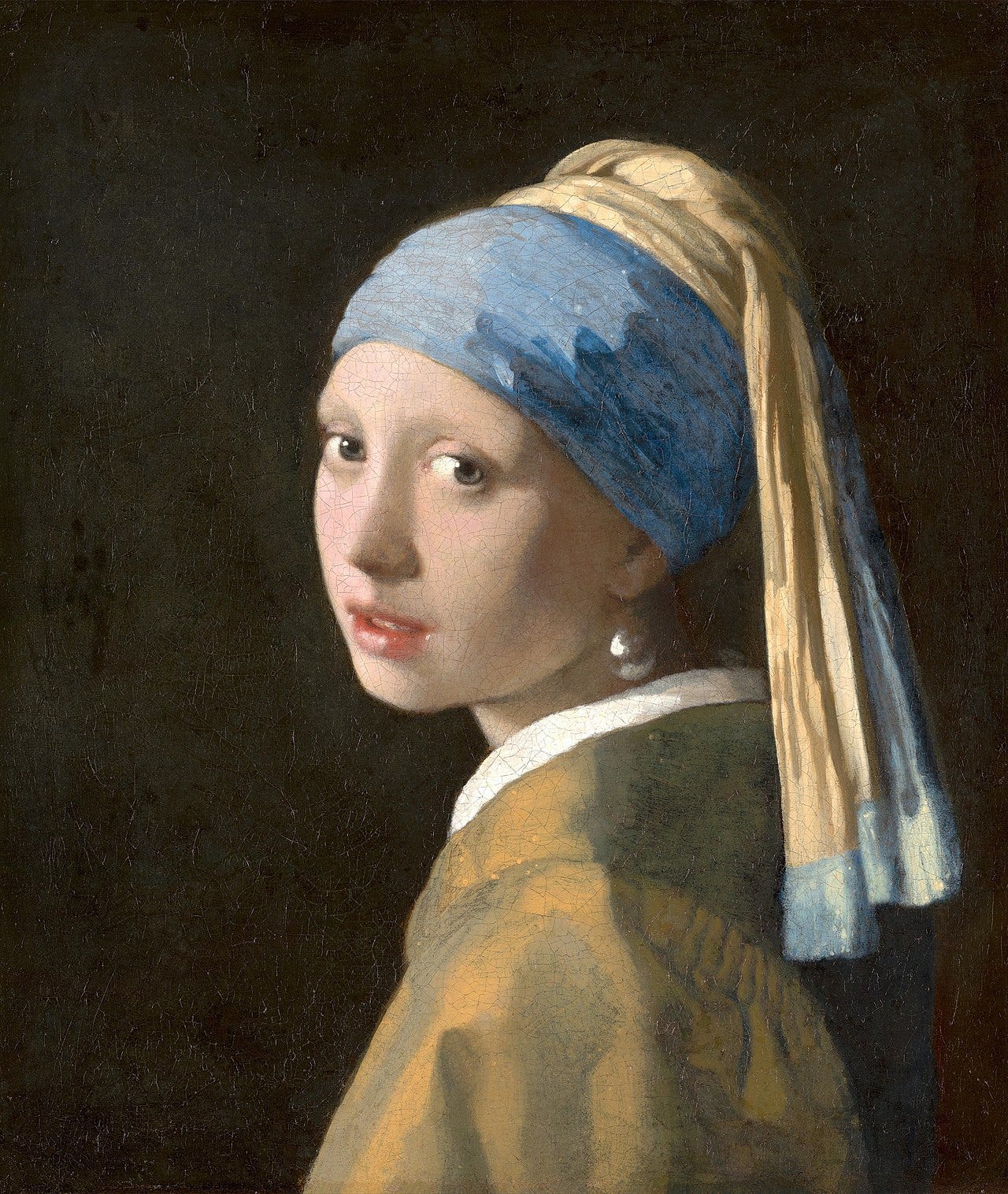When we see each other in our ordinary day to day life, there’s never any doubt that the world, the background, continues behind us: I may not be able to see what is directly behind you, but I feel certain that something’s there. With Vermeer’s painting, Girl with a Pearl Earring, the background resists being seen as deep, and seems to end where the figure begins. There is little suggestion that she stands in a three dimensional space, a virtual box, even though she appears quite three dimensional herself. The girl doesn’t exist in a room, she exists in a painting and this is a bit uncanny - a three-dimensional being living in a two dimensional space. I think this is because of the edges; the edge of her face just drops away, leaving a crack of infinite depth between her and her world. This may be because of an after image, of visual fatigue moving from bright to dark. I don't remember, it's been a while since I've seen it. It really works though, if you get the chance to see it in the flesh.
Cezanne’s blue/black edging to fruit does something similar, although it is not as peculiar as Vermeer. Cezanne’s fruit are also not as convincingly rounded as the Vermeer, so the pears more easily subside into the painting: It is the colour dynamics of the blue/black edges (they are receding colours) that suggest the roundness of the pears, but it is only a suggestion, a visual warp. Cezanne is forcing something that reads as flat to bend in on its edges, using colour dynamics to push through the picture plane and virtually curve the surface of the pears. Vermeer’s painting on the other hand is, and looks like, a physical abutment of figure and ground.
We seem to be natural Kantians: Our perception delivers a package of three dimensional space along with time, which is the persistence of things whether or not they are currently visible. To help with that definition, think of your understanding of your self, and if you believe in a continuous self that was equally present in all the past moments found in your memory, then that is what time is.
These habits are carried over to our experience of two dimensional images unless someone like Cezanne or Vermeer makes it slightly effortful to find colour dynamics convincing. When we see an object, it induces the presumption of occluded things, those things we would expect to see if the initial object weren't there. Thus with seeing, there is also a concealing, and it seems as if for full clarity, these two painters have placed their objects more beside their environment than within. That way nothing is hidden.
Over the years I have made a number of pieces that seem to worry about this state of affairs. As a student at the Ontario College of Art in the 1970’s I made a solid three foot cube of scrap wood from dismantled old pallets, and then nailed galvanized steel to the top and two adjacent sides. The materials were easily obtained in the large vacant lot on the East side of McCaul across the street from the College (it's certainly not a vacant lot anymore). Crates, pallets, and weathered sheet metal were all there in abundance, it was the cheapest art supply store in town. When I finished the sculpture, I couldn’t move it, and even if I had been able to, I had no place to keep it. So I left it there in the Brinks Building annex for the summer. In the Fall it was gone, and with a touch of embarrassment I thought of the custodial staff entering the Experimental Arts area, seeing this thing, defenceless except for its bulk and saying, “This is going to take all day.” Fair enough, it took me months to make.
I deeply regret I didn’t photograph it, to the point that from time to time, even 50 years later, I sometimes contemplate making it again. I still like the thought of it. It concealed and revealed, but never entirely because there always remained a reasonable doubt that it wasn’t solid, and instead it could have been an awkward, leaky box. And with that thought the epistemological equivalence of the sheet metal and the surface of the wood became undeniable to me. Objects never tell us anything, they just get in the way.






